You’re tired of long SEO projects that never quite move the needle, and I don’t blame you. If you run a B2B service company and your pipeline depends on real conversations, not vanity traffic, you don’t need more pages - you need sharper prioritization. I apply the 80/20 rule to keyword research so a small slice of queries that match intent and revenue get disproportionate attention. In B2B, a handful of bottom-of-funnel searches can bring in sales-qualified conversations that pay for months of content work.
The premise is simple: most keywords are noise for your business, even if they look popular - especially as Google’s brand new AI mode shifts click behavior. I focus on sales-stage language, commercial modifiers, and terms your ideal customers already use. That means fewer core pages and tighter supporting content - built for decisions, not browsing. When I keep the plan that narrow, the numbers start to feel predictable again.
This approach is not about starving your site of content; it’s about sequencing. I build the decision pages first, then add only the supporting pieces that help those pages win. Everything else waits until it can clearly move pipeline, not just sessions. If you need help operationalizing the cadence, here’s an example calendar.
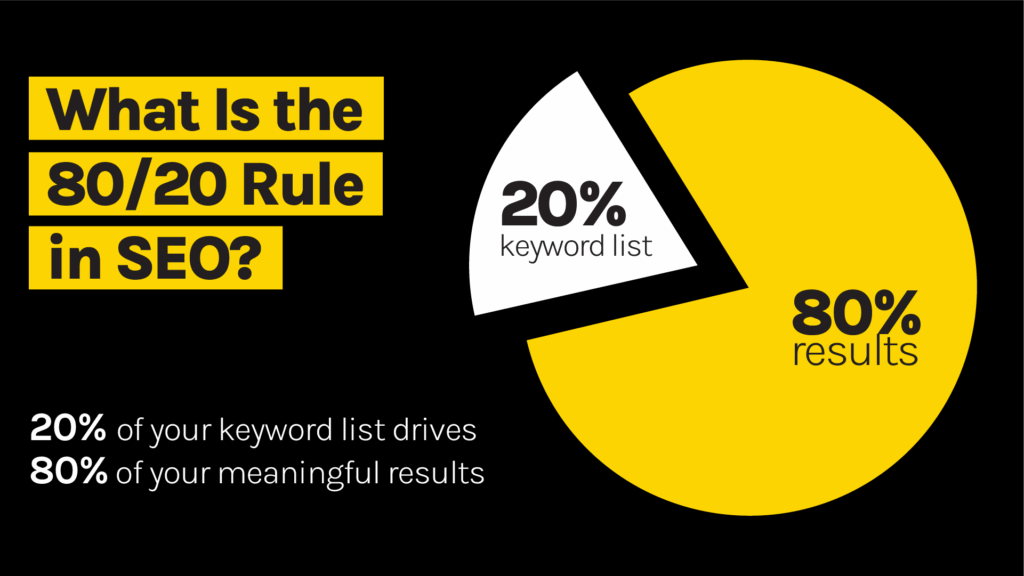
Prioritize With a Simple Score
I use a fast scoring model that surfaces winners without debate:
Score = (Intent × Value × Velocity) ÷ Difficulty
- Intent (1–3): How close is the search to buying or booking time with sales
- Value (1–3): CPC or predicted value per click as a proxy for commercial potential
- Velocity (1–3): How fast I can win based on your site’s strength and the live SERP
- Difficulty (1–100): How hard it is to reach page one given current competition
Bottom-of-funnel examples scored with 1–3 for I, V, Vel and 1–100 for Difficulty:
- HubSpot onboarding agency: 3 × 2 × 3 ÷ 15 = 1.20
- managed IT services pricing: 3 × 3 × 2 ÷ 18 = 1.00
- SOC 2 compliance services: 3 × 3 × 2 ÷ 25 = 0.72
- payroll services for manufacturing: 2 × 2 × 2 ÷ 22 = 0.36
- NetSuite implementation partner: 3 × 3 × 1 ÷ 35 = 0.26
The “top 20 percent” sits where the score is highest. Those get briefs and build slots first. Everything else gets parked or bundled into supporting content. A few practical rules I keep in mind:
- Velocity matters. A term I can rank for in 60–90 days beats a trophy keyword that drags for a year.
- Value per click isn’t perfect, but advertiser spend is a useful proxy for buyer intent.
- Difficulty sets time expectations; it’s not a yes or no.
Find Terms Fast Without Drowning in Tools
I don’t need a 40-column spreadsheet to find winners. I pull inputs from three places and move on:
-
Market demand (keyword platforms like Ahrefs, SEMrush, and Google Keyword Planner)
- Filter for low to moderate difficulty and above-average CPC for your niche
- Inspect page one for bottom-of-funnel signals (pricing pages, service pages, “Compare” boxes)
- Review competitor top pages to spot service-aligned gaps
-
First-party performance (Google Search Console)
- Sort queries where you rank positions 5–15 with healthy CTR and commercial intent
- Map those queries to pages that can be improved with stronger structure and internal links
- Catch cannibalization by grouping pages competing for the same query
-
Buyer language (calls, proposals, LinkedIn/G2 browsing)
- Capture exact category names and phrases buyers use
- Add industry, tool, and region modifiers that mirror ICP language
- Use People Also Ask and forum threads to harvest evaluation questions (costs, timelines, requirements)
Google Trends helps me check seasonality and validate rising terms while pruning falling phrases. The goal isn’t a big list. The goal is a shortlist I can actually win. Avoid AI-generated filler that bloats your plan.
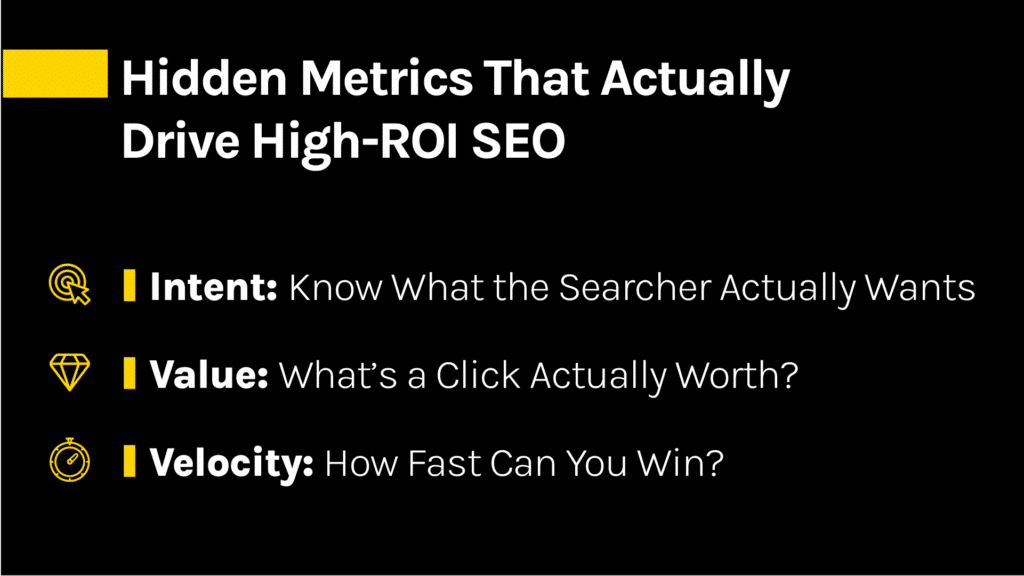
Intent First, Then Map the Journey
Intent is my north star. Broad popularity doesn’t pay the bills; decision language does. I bucket terms by stage, then confirm with live SERP clues. This is classic keyword mapping.
- Bottom of funnel: service, pricing, consultant, agency, partner, implementation, migration, audit, quote
- Examples: SOC 2 compliance services, HubSpot onboarding agency, data warehouse migration services
- Middle of funnel: comparison, best for, vendor shortlist, requirements, templates
- Examples: SOC 2 consultant vs auditor, best payroll software for construction, NetSuite implementation timeline
- Top of funnel: definitions, how it works, trends, frameworks
- Examples: what is SOC 2, how HubSpot onboarding works, what does managed IT cover
SERP confirmation cues I look for:
- High ad density and sitelinks suggest transactional intent
- Price snippets and service pages high on page one signal bottom of funnel
- People Also Ask focused on costs or vendor selection points to evaluation intent
- Guides and definitions dominating page one usually mark top of funnel
Then I bridge the journey with internal links. From a top-of-funnel explainer, I link into one strong decision page that handles pricing, process, proof, and conversion. From a comparison page, I link to the exact service variant and related case studies. The trail stays short and obvious.
Difficulty as Time-to-Rank, Not a Wall
Difficulty is not just a number in a tool; it’s a forecast of time to rank. I blend metrics with human judgment so I bet time where outcomes are timely.
How I size up a keyword fast:
- Check KD in a major tool, remembering it mirrors backlink counts more than content quality
- Compare your domain authority to the average of the top three results
- Count referring domains to the top three URLs
- Scan freshness: are top pages updated or stale on a changing topic
- Note SERP format: are service pages winning, or only long guides
Quick-win thresholds I like:
- KD under 20 and top results with fewer than 20 referring domains
- A mix of sites with similar authority to yours
- Outdated pages in the top five with weak on-page structure
Authority levers that shorten time to rank in B2B:
- Original data or analysis that earns referential links
- Case studies with named clients and strong internal links
- Mentions from partners, vendors, and industry associations
Difficulty is dynamic. I revisit “hard” terms quarterly and promote a few when the data says the door is open. My diagnostic questions:
- Has your domain authority closed the gap with current top pages
- Did top results lose links or show content decay
- Can I ship a fresher, tighter page with real proof (quotes, screenshots, process visuals)
- Do I have internal link support from existing winners
Long-Tail Pages That Feed One Decision Page
Long tail doesn’t mean low value. In B2B, it often means high clarity and high intent. Patterns that convert well:
- industry + service + qualifier: SaaS SEO agency pricing, healthcare IT support services, SOC 2 readiness assessment for fintech
- tool + service + niche: HubSpot implementation for nonprofits, NetSuite integration partner for retail
- problem + service: data migration services with zero downtime, payroll compliance audit services
I group long-tail terms into clusters that feed a single bottom-of-funnel pillar. For example, I build one comprehensive managed IT services page. Then I support it with pages on pricing, industry-specific use cases, and key comparisons that all link back to the pillar using anchors that mirror buyer language. Build strategic clusters that align to how buyers evaluate.
To avoid cannibalization:
- Pick one primary URL for each core service and keep it canonical
- Merge near-duplicates chasing tiny variations
- Use internal links to signal which page is the decision page
- If two pages rank for the same term, consolidate and redirect the weaker one
Internal linking details that help the cluster work:
- Use descriptive anchors, not generic “read more”
- Link between sibling pages when it helps buyers compare or go deeper
- Surface cluster pages in navigation or a resources hub to spread PageRank naturally
- Refresh older long-tail pages when pricing, features, or standards change
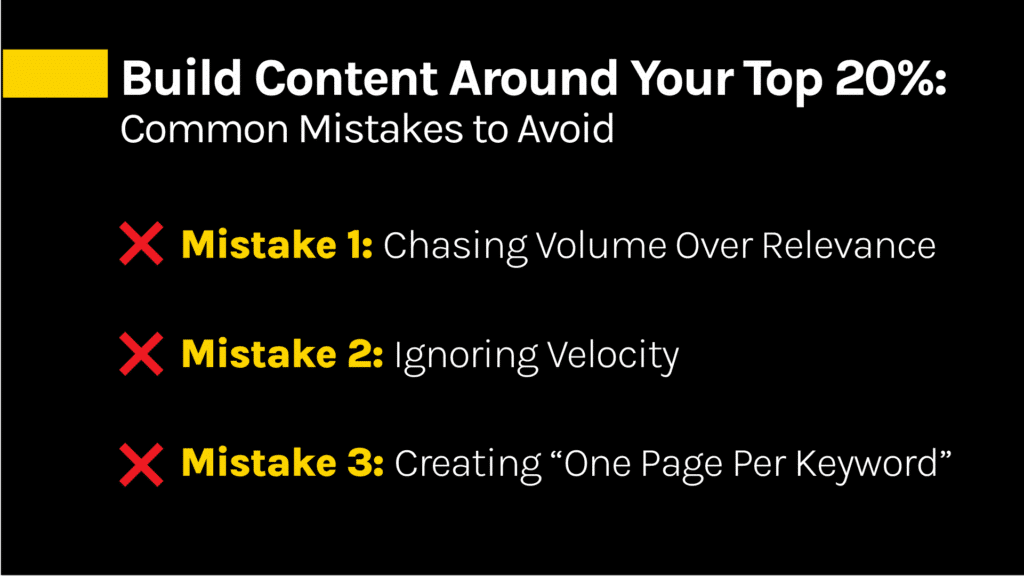
Common Mistakes and a Cadence That Compounds
I see the same traps soak up time without moving revenue:
-
Mistake 1: Chasing volume over relevance
- Do this instead: Add ICP qualifiers (industry, tool, pricing). Use CPC as a rough intent proxy. Rescore with Intent × Value × Velocity ÷ Difficulty.
-
Mistake 2: Ignoring velocity
- Do this instead: Prioritize targets you can reach in 60–90 days with credible content and a few internal links. Bank early wins that fund slower climbs.
-
Mistake 3: One page for every tiny variation
- Do this instead: Map to intent, not exact match terms. Consolidate variants into one stronger page with clean subheads for secondary phrases.
-
Mistake 4: Treating tools as the strategy
- Do this instead: Start with buyer language from calls and proposals. Use tools to size, sort, and confirm - then write for decisions.
-
Mistake 5: Publishing then moving on
- Do this instead: Rescore monthly, review winners, improve content quality, and add internal links from new pages to old pages that still matter.
Give your plan a steady cadence. Each month, I rescore the active list, look for rising opportunities in Search Console, and refresh copy where competitors crept ahead. I promote winners with internal links, add a new proof block or mini case when I can, and keep primary pages fresh. Quick wins often show in 30–90 days; compounding shows over quarters as clusters harden and authority rises. For planning rhythm, use an example calendar.
It might feel like you’re ignoring ideas that seem nice to have. You are. That’s the point. Pick the 20 percent of keywords that can create real conversations. Build intentionally. Measure in revenue, not page count. And enjoy the relief that comes when search starts working for your business rather than the other way around.

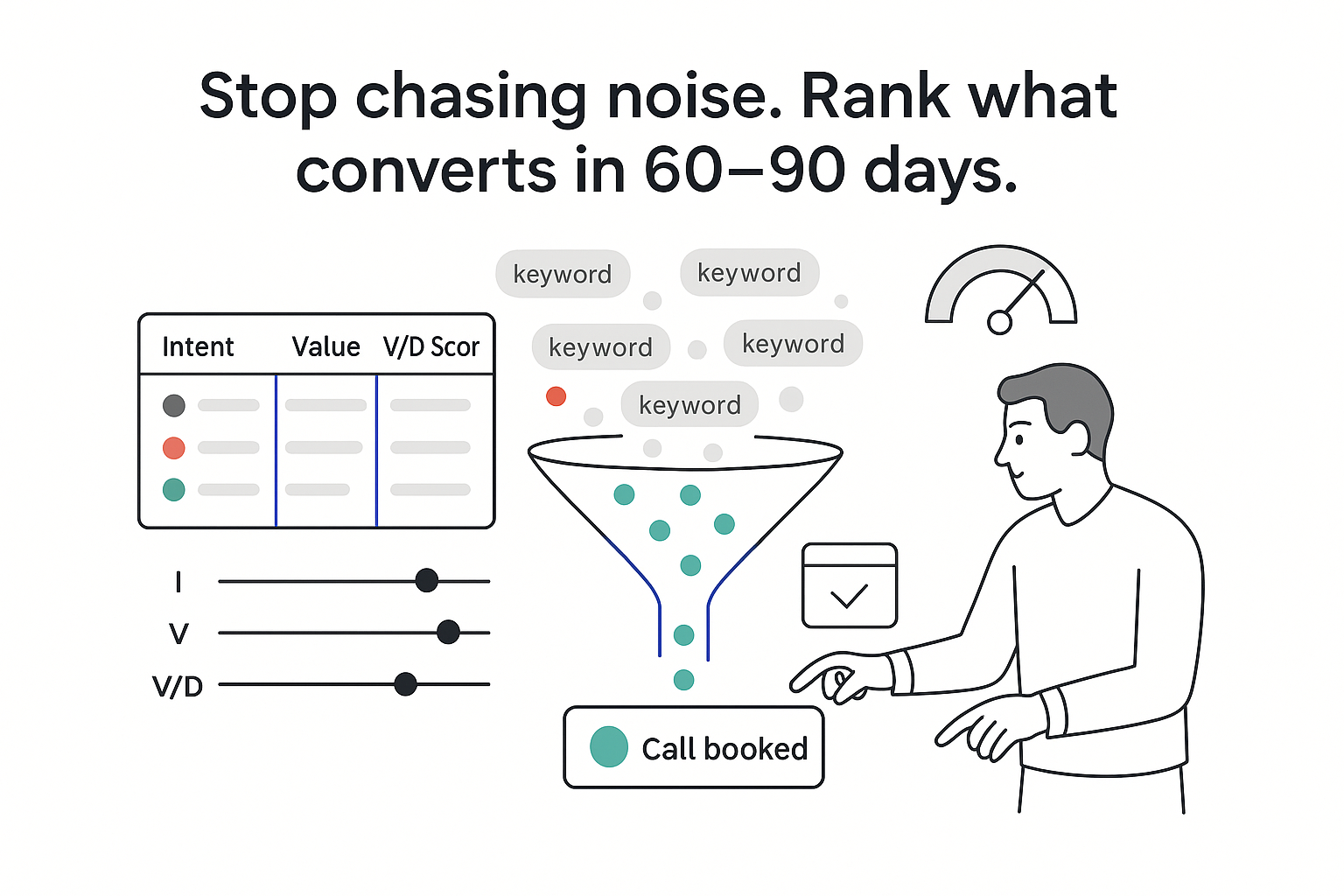

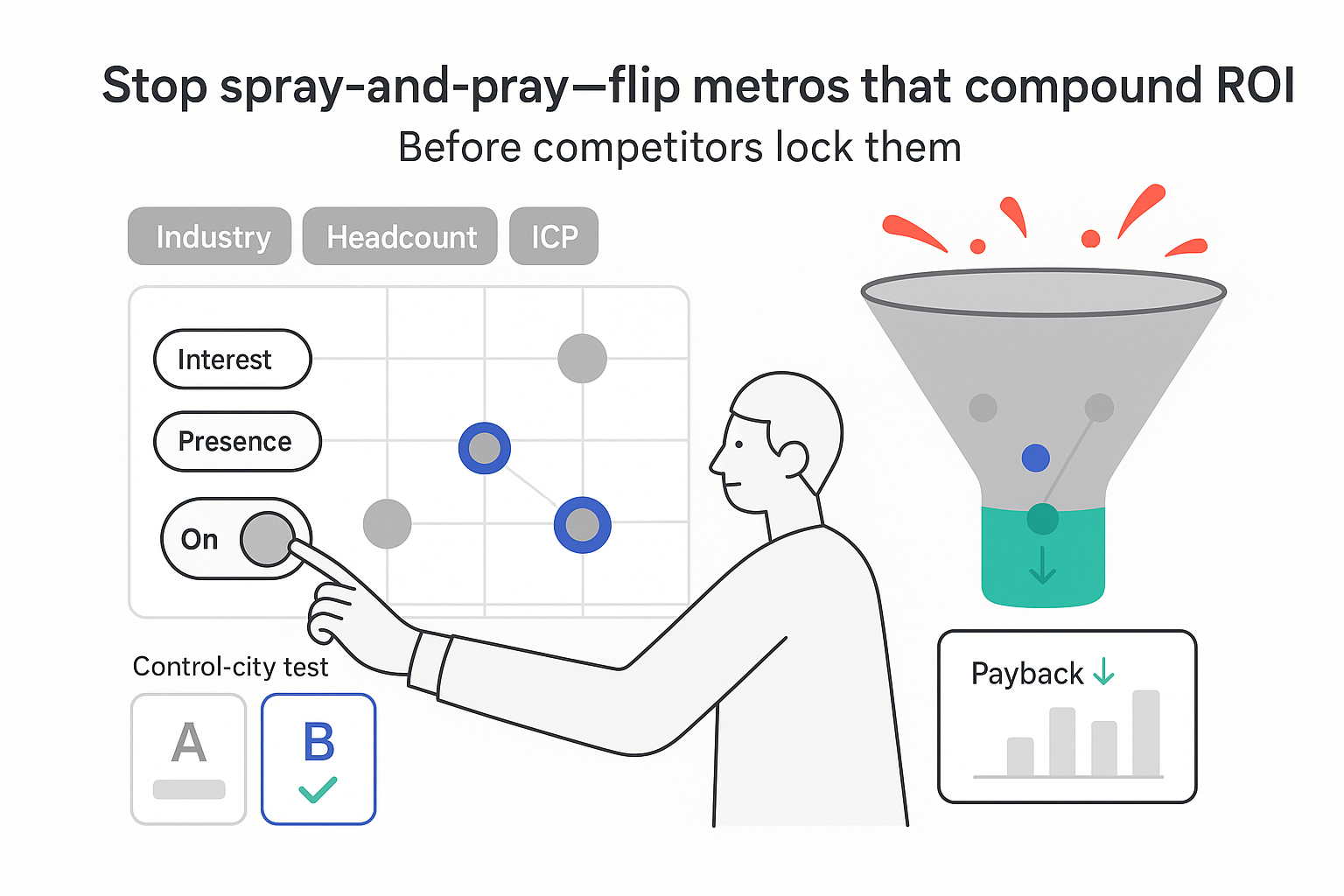
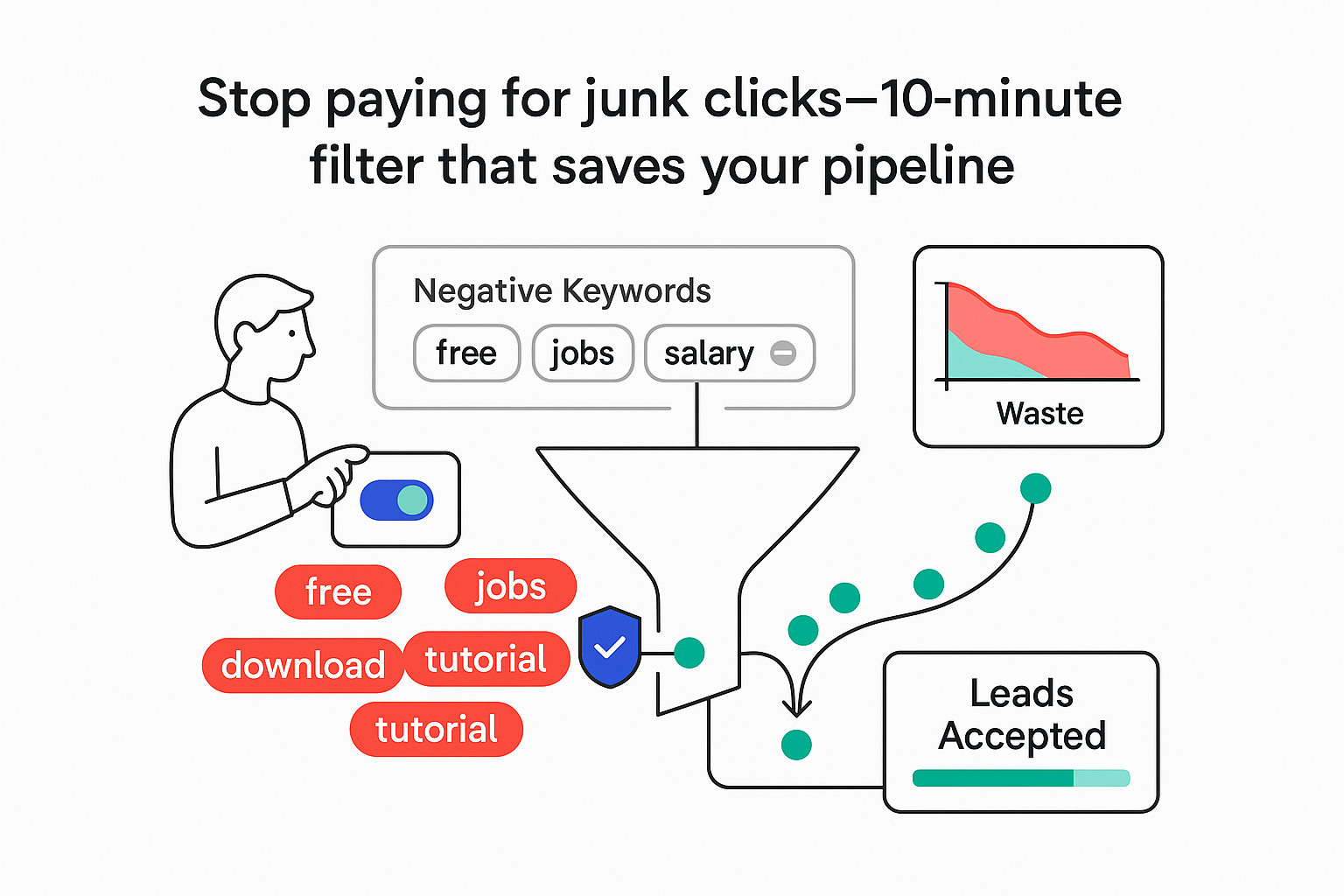
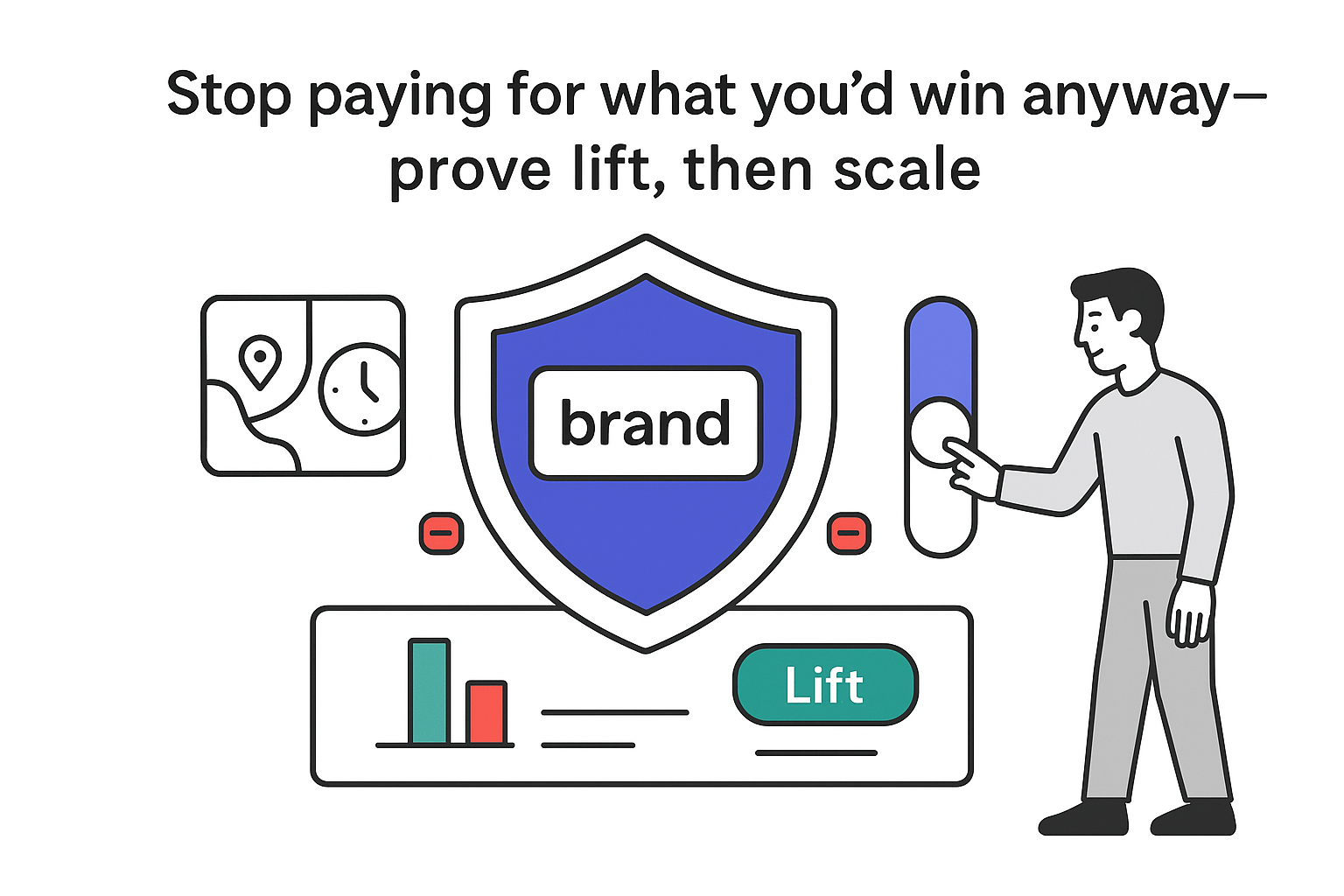
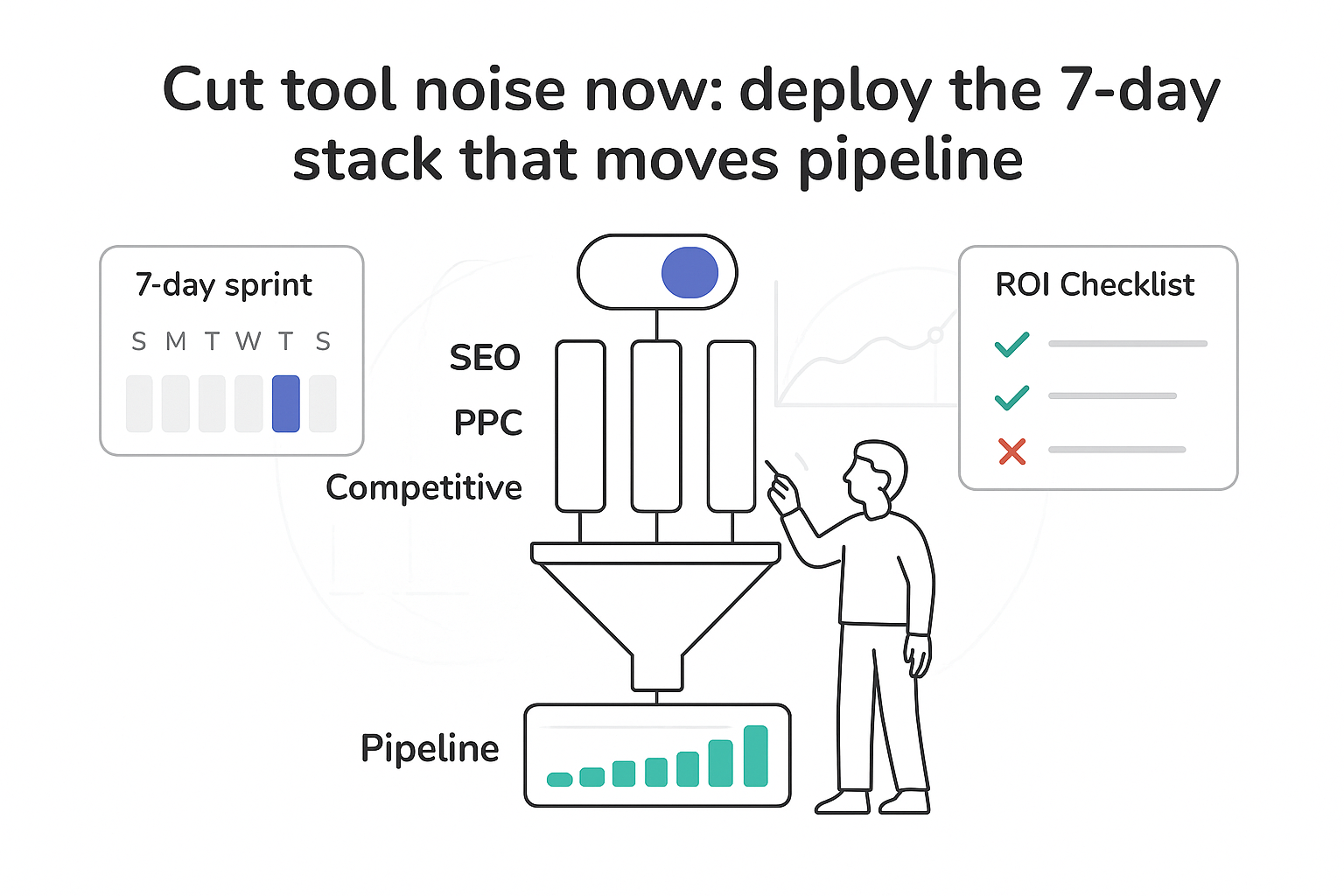
.svg)